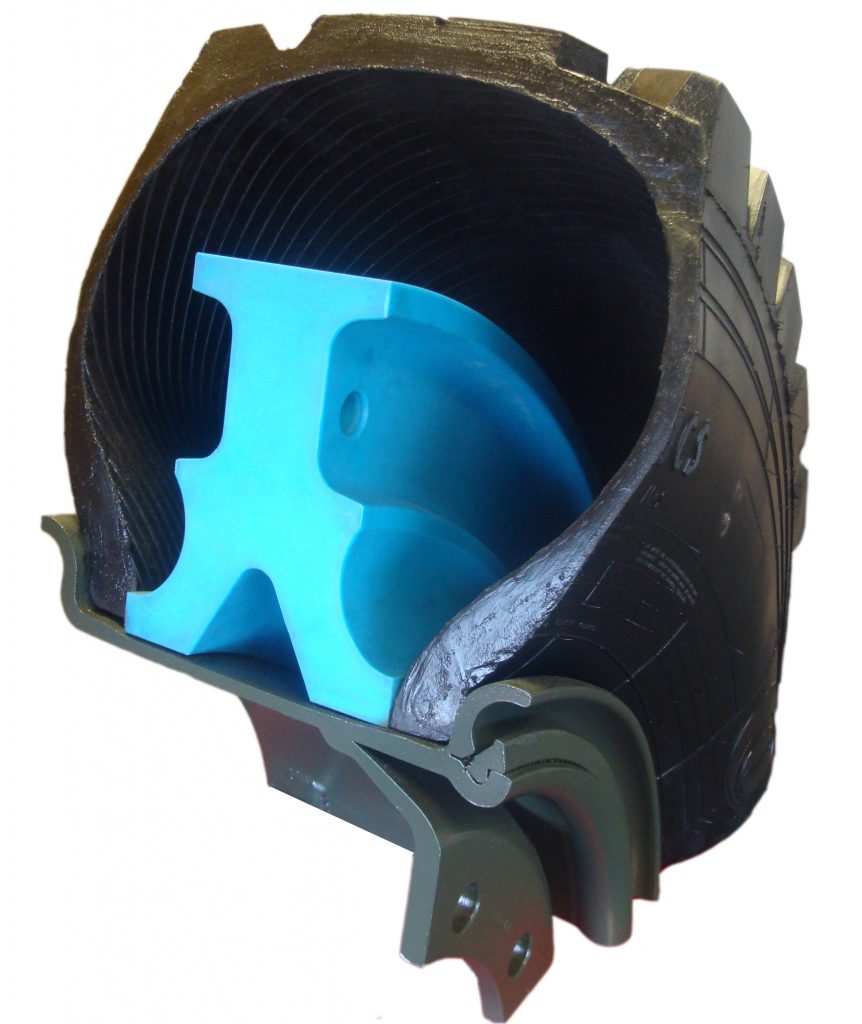- June 18, 2025
- Posted by: feinuojixie
- Category: Run Flat Guide


In the unforgiving conditions of modern combat, every component of a military vehicle must contribute to mission success. One of the most overlooked yet critical components is the run flat tire. This innovation is more than just a contingency—it is a strategic asset. Designed to continue functioning after sustaining damage, the run flat tire plays a pivotal role in ensuring vehicle mobility under fire, navigating hostile terrain, and sustaining momentum in mission-critical scenarios. In military use, the run flat tire is synonymous with performance, protection, and precision—three qualities essential for survival and victory on the battlefield. This article explores how this seemingly simple piece of technology silently upholds the backbone of military mobility.


The Core of Performance: Why Military Vehicle Mobility Depends on Run Flat Tire
In combat, stopping is not an option. Military missions often require high-speed travel across hostile environments where tire puncture is not just probable but expected. Run flat tire technology enables vehicles to continue driving even after losing air pressure due to damage or ballistic impact. Unlike traditional tire, which collapses upon puncture, the run flat tire uses reinforced sidewalls or internal support rings to maintain structural integrity.
This ability to keep moving—sometimes for over 50 kilometers at reduced speeds—provides a critical window for evasion, regrouping, or completing a mission. Whether crossing rugged mountain passes or urban war zones riddled with debris, run flat tire ensures continuous performance without compromising maneuverability or traction.
Unmatched Protection: Surviving the Battlefield with Run Flat Tire Technology
The battlefield is an unpredictable environment filled with threats like improvised explosive devices, sharp shrapnel, and gunfire. A disabled vehicle due to tire failure can leave troops vulnerable, stalled in enemy territory with limited cover. Run flat tire offers protection by preventing immobilization in such situations.
It significantly reduces the risk of vehicle abandonment, which not only jeopardizes lives but also risks sensitive equipment falling into the wrong hands. Moreover, the capability of run flat tire to operate after damage adds a layer of passive defense to military vehicles, complementing active armor systems and electronic countermeasures. In this way, it serves as a vital form of survivability enhancement in combat conditions.
Precision Engineering: The Science Behind Military-Grade Run Flat Tire
Run flat tire used in military operations are engineered to higher standards than their civilian counterparts. These tires are built using composite rubber compounds, reinforced steel belts, and sometimes integrated with polymer-based support inserts. They undergo rigorous testing to ensure they can handle extreme heat, cold, weight loads, and ballistic threats.
Military engineers work closely with tire manufacturers to develop tread patterns optimized for off-road traction, sidewall strength for bullet resistance, and internal support systems capable of sustaining heavy armored vehicles. The result is a tire that is not only reliable under pressure but also fine-tuned for precise performance across diverse terrains.
Adaptation Across Military Platforms: From Light Tactical to Armored Vehicle
One of the greatest strengths of run flat tire is its adaptability. From light tactical vehicles like the Humvee to heavily armored transport like the MRAP, this tire technology is integrated into a wide range of platforms. Each vehicle type demands different performance characteristics—speed, armor weight support, or off-road capability—and run flat tire is customized to meet these specific needs.
Its integration ensures that military forces maintain operational continuity regardless of the vehicle class. Whether in reconnaissance missions, convoy escort, or frontline assault, the use of run flat tire across platforms standardizes reliability and increases interoperability within armed forces.
Logistics and Maintenance: Simplifying Supply Chains with Run Flat Tire
Military logistics often involve long supply chains and limited access to maintenance in field conditions. Traditional tires require frequent replacements and stockpiling of spares, which increases logistical burden. In contrast, the durability of run flat tire reduces the need for carrying extra replacements and simplifies field maintenance.
By minimizing tire-related breakdowns, military units can reduce downtime and maintain focus on mission execution. Maintenance crews spend less time on emergency tire replacements, and supply convoys face fewer delays. This logistical efficiency not only lowers costs but also enhances readiness across the board.


Global Standards and Real-World Testing: What Proves a Run Flat Tire Battle-Ready
Military run flat tire must meet strict international standards and undergo extensive testing before deployment. Tests simulate real-world threats such as ballistic penetration, off-road endurance, chemical exposure, and heat resistance. Only those tires that survive these brutal simulations are approved for field use.
NATO and other military alliances have their own tire certification protocols, and many of today’s most trusted run flat tire are the result of decades of field experience. From Afghanistan to the Sahel, these tires have proven their reliability in some of the world’s harshest conflict zones, earning their place in every military vehicle’s mission kit.
Why Run Flat Tire Remains a Strategic Advantage in Military Mobility
The run flat tire is more than a technological innovation—it is a mission enabler. In military use, it embodies the principles of performance, protection, and precision. By keeping vehicles mobile under threat, it preserves tactical momentum and enhances the safety of personnel. Its engineering excellence and versatility across platforms make it indispensable to modern warfare logistics and operations.
As global military missions grow increasingly complex and mobile, the run flat tire stands out as a silent force multiplier—ensuring that when the terrain gets tough or the fire gets heavy, the mission moves forward without hesitation.
